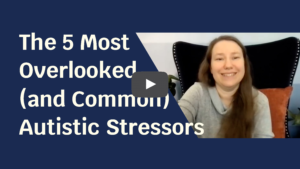What it is
Have you heard the term ’growth mindset’? It’s been popular in education circles as well as in books on motivation, grit, flow, and all that.
It’s the idea that when learning something new, or developing an existing skill, that it is important to keep trying, even when it doesn’t go perfectly at first, because as you try more and learn and experiment and understand it better, you will get better at whatever it is you’re learning.
The opposite to this is a ’fixed mindset,’ which is the idea that you should be good at something pretty much right away, and if you’re not, that you’re just not good at it. You either have it or you don’t. This often leads to giving up early, because in this mindset there’s little point in trying if you don’t have an inherent talent for something.
A growth mindset is something I think a lot of us on the spectrum have in spades.
The growth mindset ideal started gaining popularity about the same time I started teaching high school, though I didn’t need a professional development seminar to persuade me of it’s value. It was how I had lived most of my life. Through grit and determination and trying over and over again.
This is something I think a lot of us on the spectrum have in spades, simply because we tend to not quite fit in with society’s expectations, so to survive, we have to learn to adapt and practice that adaptation for years (and often we still only approximate the social skills that others take for granted, which can be super frustrating, but that’s a different blog post).
In practice
A lot has been written in the last decade about how to foster a growth mindset. I’d like to briefly introduce one way to kill it. Because it’s something I think our schools are doing without even realizing it.
Let’s take the example of a regular math class. Say you go to class one day and the teacher presents a new concept. She gives a few examples and you do a few problems in class, and then you go home and try more problems for homework, with or without help. Fine so far.
The next day, that homework gets turned in and you get a grade on it. Say you get 7 out of 10 right. That grade goes in the teacher’s grade book. What’s the message here?
I’ve never heard a teacher say this outright, but the implicit message is that you are expected to be perfect the first time, and that you’re going to be punished when you’re not.
The implicit message is that you are expected to be perfect the first time, and that you’re going to be punished when you’re not.
Sound harsh? Let’s break that down a bit. Okay, you go to class and are presented with a new concept, you practice it a little with help in class, then are set loose to try it on your own at home, and the next day you get evaluated on how well you mastered this thing you just learned. And that evaluation counts toward your entire semester grade.
That one grade might not seem like a big deal to adults with fully formed brains and the hindsight to see how it gets averaged with a bunch of other homework and test grades and maybe a project or two, so that over the course of the semester it won’t count a lot. But to a child or adolescent without a fully formed prefrontal cortex or the experience to put it into context? It feels like a big deal.
And how it feels is what matters most. Because feelings are what will drive a kid (or adult) to try again or not. To shrug something off or not. To take a risk or not.
Put it this way. A teacher might think that 7/10 grade means that, on your first day of learning a new topic, you can apply it correctly 70% of the time, and that’s actually pretty good.
But put another way, that 7/10 grade is also a C, and feels the same as a C on a test or larger project. It doesn’t feel like a tiny little grade. (And for some, that’s the equivalent of a failure).
Feelings are what will drive someone to try again or not. To shrug something off or not. To take a risk or not.
Or put another way, you are being punished (three points off) for not being perfect. On your first day of trying something new.
Where is the time to practice this new concept? That evening of homework is practice doing the new skill, but it is not practice in the sense of an evaluation-free, judgment-free, opportunity to try and fail and learn and grow without consequence.
That’s just one day’s math class. Yet this is how all of our subjects are taught from early elementary through college.
Not good enough
No wonder a growth mindset is so challenging to foster in our schools, even with supportive teachers encouraging it daily. Why would any kid keep trying in the face of daily overwhelming judgment? In fact, I believe that most kids show an incredible strength and resiliency in the face of the constant message that they are not meeting expectations.
When I taught high school, the administration “talked to me” several times about my grading practices—I gave very few grades—but they couldn’t argue with the results. I taught German language and culture in a low income public school in one of the poorest states in the US, and my students learned.
Students need the opportunity to try, test, integrate, and understand what they are learning before they have to demonstrate competence at it.
It took a while for some of them to drop the constant fear of getting things wrong, but as they saw that I really wasn’t going to pressure or criticize them, they started relaxing, trying things even when they weren’t sure, getting words and grammar wrong and trying again, and over time they got much better and passed all the (quite difficult) semester tests very well (most with As or Bs). This is a growth mindset.
I’m not advocating eliminating all forms of assessment from schools, but the daily barrage of judgment doesn’t foster learning, it fosters fear. Immobility. Perfectionism (a version of fear). A reluctance to try. A fixed mindset.
Several of the best education systems in the world, like Finland and Germany, routinely give lots of time for practice and very few grades, and their students do not suffer. They excel. Largely because they have the opportunity to try, test, integrate, and understand what they are learning before they have to demonstrate competence at it. This is a growth mindset.
So how do you kill a growth mindset? In short, judgement.




